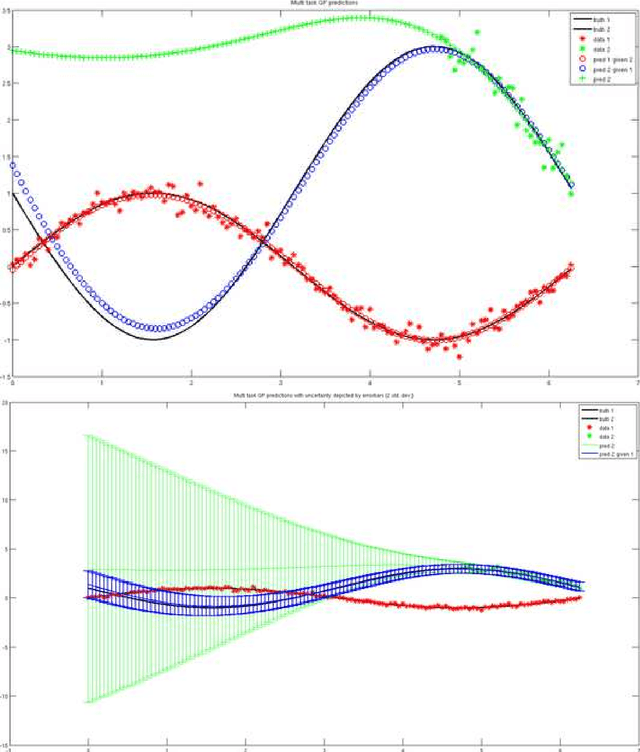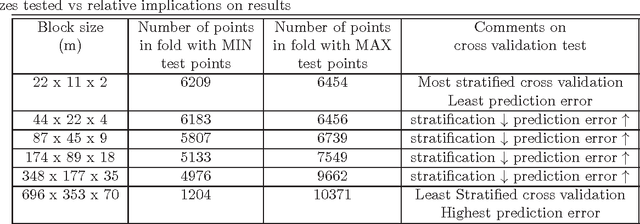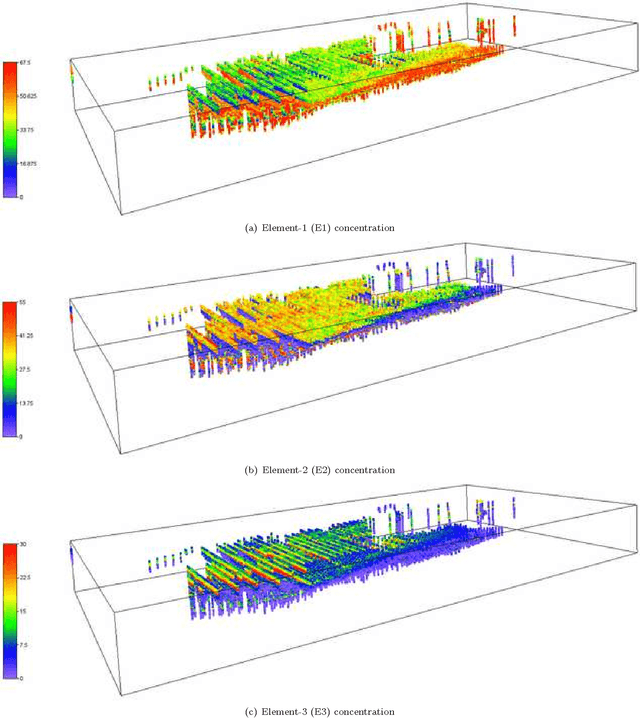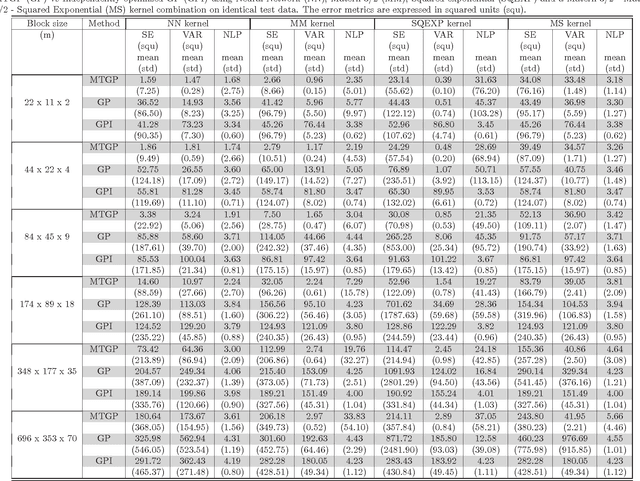Arman Melkumyan
University of Sydney
Unsupervised ore/waste classification on open-cut mine faces using close-range hyperspectral data
Feb 09, 2023Abstract:The remote mapping of minerals and discrimination of ore and waste on surfaces are important tasks for geological applications such as those in mining. Such tasks have become possible using ground-based, close-range hyperspectral sensors which can remotely measure the reflectance properties of the environment with high spatial and spectral resolution. However, autonomous mapping of mineral spectra measured on an open-cut mine face remains a challenging problem due to the subtleness of differences in spectral absorption features between mineral and rock classes as well as variability in the illumination of the scene. An additional layer of difficulty arises when there is no annotated data available to train a supervised learning algorithm. A pipeline for unsupervised mapping of spectra on a mine face is proposed which draws from several recent advances in the hyperspectral machine learning literature. The proposed pipeline brings together unsupervised and self-supervised algorithms in a unified system to map minerals on a mine face without the need for human-annotated training data. The pipeline is evaluated with a hyperspectral image dataset of an open-cut mine face comprising mineral ore martite and non-mineralised shale. The combined system is shown to produce a superior map to its constituent algorithms, and the consistency of its mapping capability is demonstrated using data acquired at two different times of day.
* Manuscript has been accepted for publication in Geoscience Frontiers. Keywords: Hyperspectral imaging, remote sensing, mineral mapping, machine learning, convolutional neural networks, transfer learning, data augmentation, illumination invariance
A Machine Learning Approach for Material Type Logging and Chemical Assaying from Autonomous Measure-While-Drilling Data
Feb 07, 2022



Abstract:Understanding the structure and mineralogical composition of a region is an essential step in mining, both during exploration (before mining) and in the mining process. During exploration, sparse but high-quality data are gathered to assess the overall orebody. During the mining process, boundary positions and material properties are refined as the mine progresses. This refinement is facilitated through drilling, material logging, and chemical assaying. Material type logging suffers from a high degree of variability due to factors such as the diversity in mineralization and geology, the subjective nature of human measurement even by experts, and human error in manually recording results. While laboratory-based chemical assaying is much more precise, it is time-consuming and costly and does not always capture or correlate boundary positions between all material types. This leads to significant challenges and financial implications for the industry, as the accuracy of production blasthole logging and assaying processes is essential for resource evaluation, planning, and execution of mine plans. To overcome these challenges, this work reports on a pilot study to automate the process of material logging and chemical assaying. A machine learning approach has been trained on features extracted from measurement-while-drilling (MWD) data, logged from autonomous drilling systems (ADS). MWD data facilitate the construction of profiles of physical drilling parameters as a function of hole depth. A hypothesis is formed to link these drilling parameters to the underlying mineral composition. The results of the pilot study discussed in this paper demonstrate the feasibility of this process, with correlation coefficients of up to 0.92 for chemical assays and 93% accuracy for material detection, depending on the material or assay type and their generalization across the different spatial regions.
* 29 pages, 19 figures, mathematical geosciences, Rio Tinto Centre for Mine Automation
Hyperspectral CNN Classification with Limited Training Samples
Nov 28, 2016



Abstract:Hyperspectral imaging sensors are becoming increasingly popular in robotics applications such as agriculture and mining, and allow per-pixel thematic classification of materials in a scene based on their unique spectral signatures. Recently, convolutional neural networks have shown remarkable performance for classification tasks, but require substantial amounts of labelled training data. This data must sufficiently cover the variability expected to be encountered in the environment. For hyperspectral data, one of the main variations encountered outdoors is due to incident illumination, which can change in spectral shape and intensity depending on the scene geometry. For example, regions occluded from the sun have a lower intensity and their incident irradiance skewed towards shorter wavelengths. In this work, a data augmentation strategy based on relighting is used during training of a hyperspectral convolutional neural network. It allows training to occur in the outdoor environment given only a small labelled region, which does not need to sufficiently represent the geometric variability of the entire scene. This is important for applications where obtaining large amounts of training data is labourious, hazardous or difficult, such as labelling pixels within shadows. Radiometric normalisation approaches for pre-processing the hyperspectral data are analysed and it is shown that methods based on the raw pixel data are sufficient to be used as input for the classifier. This removes the need for external hardware such as calibration boards, which can restrict the application of hyperspectral sensors in robotics applications. Experiments to evaluate the classification system are carried out on two datasets captured from a field-based platform.
Information fusion in multi-task Gaussian processes
Sep 05, 2013



Abstract:This paper evaluates heterogeneous information fusion using multi-task Gaussian processes in the context of geological resource modeling. Specifically, it empirically demonstrates that information integration across heterogeneous information sources leads to superior estimates of all the quantities being modeled, compared to modeling them individually. Multi-task Gaussian processes provide a powerful approach for simultaneous modeling of multiple quantities of interest while taking correlations between these quantities into consideration. Experiments are performed on large scale real sensor data.
 Add to Chrome
Add to Chrome Add to Firefox
Add to Firefox Add to Edge
Add to Edge